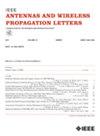Tropospheric Refractivity Estimation Using DeepONet
IF 4.8
2区 计算机科学
Q2 ENGINEERING, ELECTRICAL & ELECTRONIC
引用次数: 0
Abstract
The problem of tropospheric tomography is considered. The task is formulated as finding an inverse operator that maps electromagnetic field measurement data to the spatial distribution of the refractive index. The DeepONet architecture and an automatically differentiable parabolic equation are used to construct the inverse operator. Training data is generated using the parabolic equation method. Unlike previous works, the proposed method does not require prior information about the spatial distribution of the refractive index profile. The effectiveness of the proposed method is demonstrated for typical profiles: evaporation duct, surface duct, and trilinear profiles. A comparison with the adjoint method and genetic algorithm was carried out. It is shown that the proposed method allows performing inversion with an accuracy of up to 1 M-unit in real time.基于DeepONet的对流层折射率估算
讨论了对流层层析成像问题。该任务被表述为找到一个逆算子,将电磁场测量数据映射到折射率的空间分布。利用DeepONet结构和一个自动可微抛物方程构造逆算子。训练数据采用抛物线方程法生成。与以往的工作不同,该方法不需要关于折射率剖面空间分布的先验信息。对于典型的蒸发风道、表面风道和三线性风道,该方法的有效性得到了验证。并与伴随法和遗传算法进行了比较。结果表明,该方法可以实时进行精度高达1 M-unit的反演。
本文章由计算机程序翻译,如有差异,请以英文原文为准。
求助全文
约1分钟内获得全文
求助全文
来源期刊
CiteScore
8.00
自引率
9.50%
发文量
529
审稿时长
1.0 months
期刊介绍:
IEEE Antennas and Wireless Propagation Letters (AWP Letters) is devoted to the rapid electronic publication of short manuscripts in the technical areas of Antennas and Wireless Propagation. These are areas of competence for the IEEE Antennas and Propagation Society (AP-S). AWPL aims to be one of the "fastest" journals among IEEE publications. This means that for papers that are eventually accepted, it is intended that an author may expect his or her paper to appear in IEEE Xplore, on average, around two months after submission.

 求助内容:
求助内容: 应助结果提醒方式:
应助结果提醒方式:


